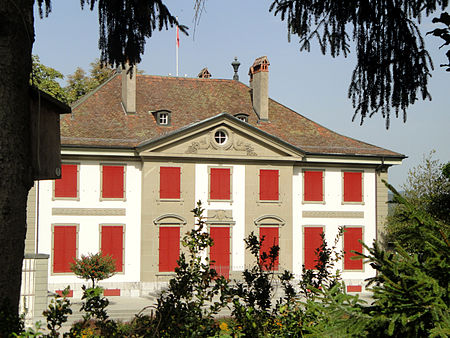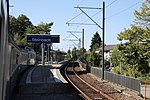Lohn Estate

The Lohn Estate (German: Landsitz Lohn, French: Domaine du Lohn) is a manor and estate located in Kehrsatz, canton of Bern, Switzerland. It serves as the official estate of the Swiss Federal Council. From 1942 to 1994, the Lohn Estate accommodated the official guests of the Swiss Confederation, which have included a number of heads of States and royalty. It is a Swiss heritage site of national significance.The manor was built in 1782 by the Tscharner family and was designed by the architect Carl Ahasver von Sinner. The estate was acquired in 1897 by the businessman Friedrich Emil Welti. In 1942, it was donated to the Swiss Confederation by Welti's widow in memory of his father, the former Federal councillor Emil Welti. The manor is a two-storey country house designed in the Neo-classical style. It features several reception rooms on the ground floor and five bedrooms on the upper floor, all adorned with paintings from the Welti collection.
Excerpt from the Wikipedia article Lohn Estate (License: CC BY-SA 3.0, Authors, Images).Lohn Estate
Lohnweg,
Geographical coordinates (GPS) Address Website External links Nearby Places Show on map
Geographical coordinates (GPS)
| Latitude | Longitude |
|---|---|
| N 46.908611111111 ° | E 7.4747222222222 ° |
Address
Landgut Lohn
Lohnweg 2
3122
Bern, Switzerland
Open on Google Maps











